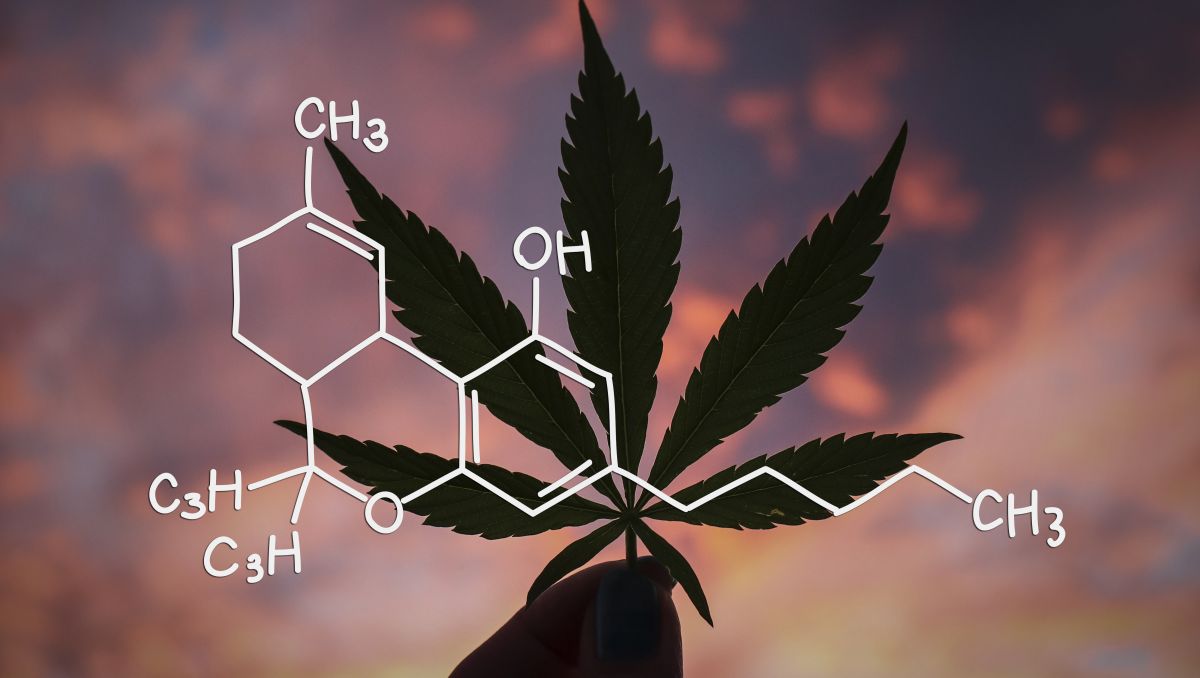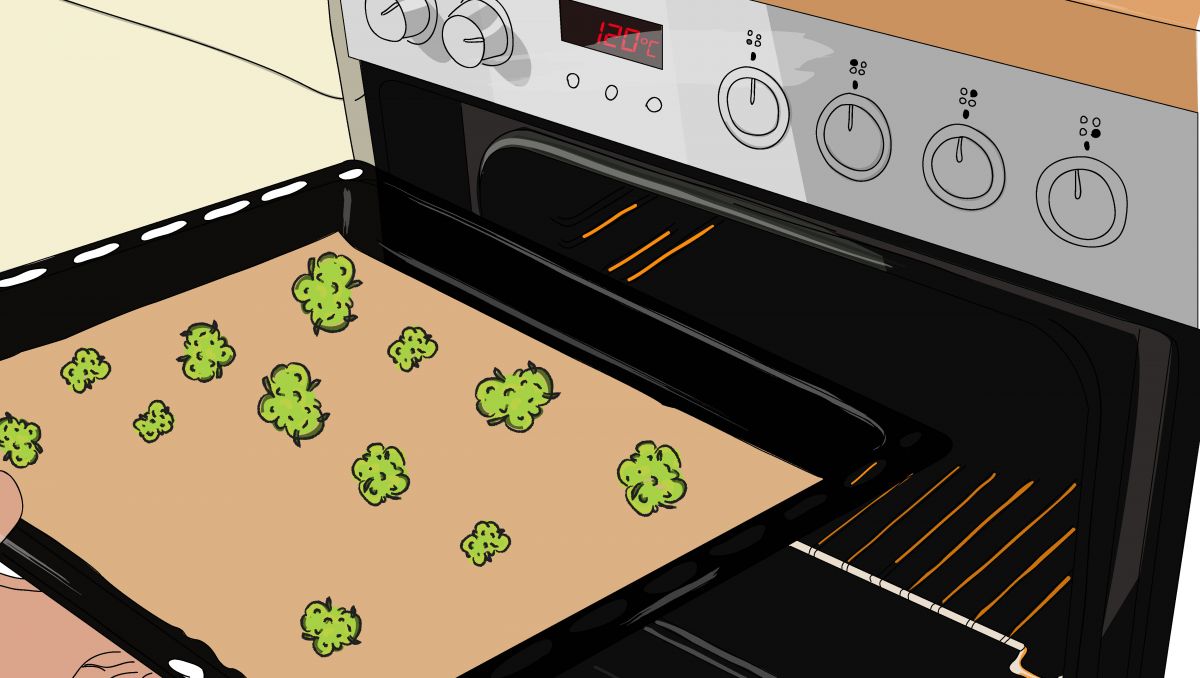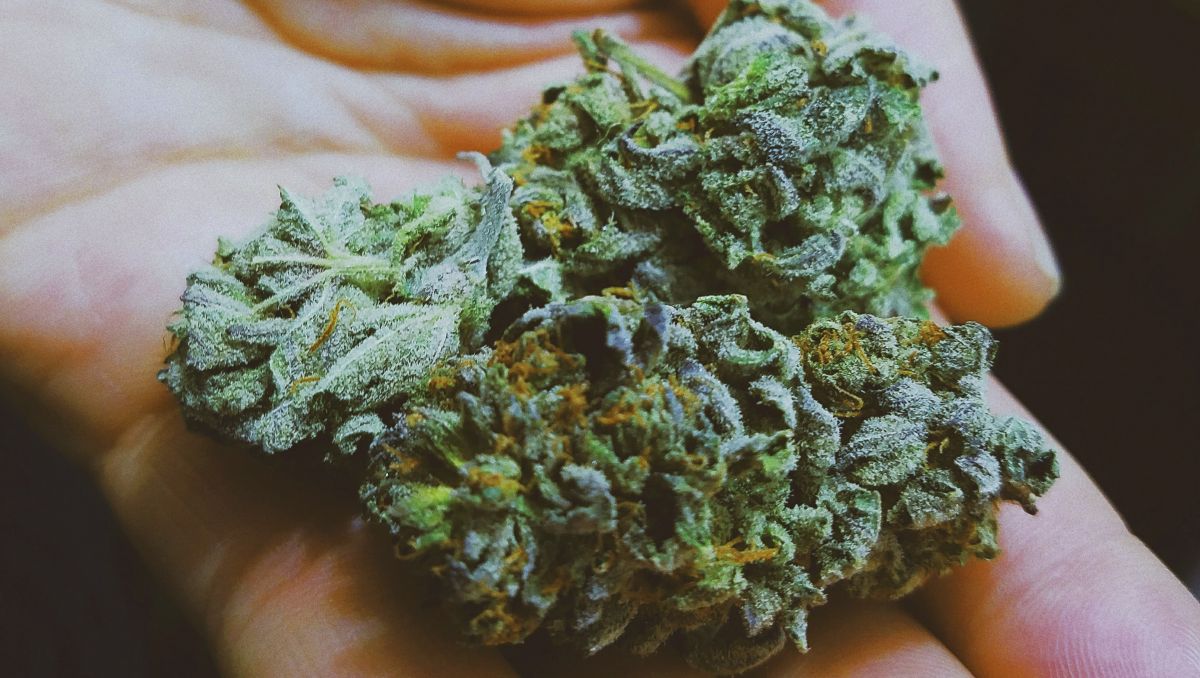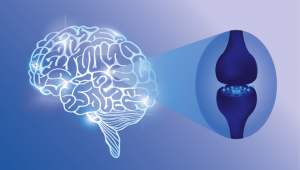What Is CBN?

- 1. The story behind "the sleepy cannabinoid"
- 2. Where does cbn come from?
- 3. How to turn thc into cbn
- 3. a. Applying heat to get cbn
- 3. b. Degrading thc with light
- 4. What are cbn's properties?
- 4. a. Cbn as an antibacterial
- 4. b. Cbn for glaucoma
- 4. c. Cbn for stimulating appetite
- 4. d. Cbn as an anti-inflammatory
- 4. e. Cbn for neuroprotection
- 5. How does cbn work in the body?
- 6. Is cbn psychoactive?
- 7. The bottom line
In the world of cannabis, the two most famous cannabinoid compounds are THC, or tetrahydrocannabinol, and CBD, or cannabidiol.
However, there is so much more in this world of marijuana than that. From trichomes to terpenes and more than a dozen cannabinoids, cannabis is a full spectrum gift from nature.
Some of the most famous cannabinoids include:
- THC, or tetrahydrocannabinol;
- CBD, or cannabidiol;
- CBG, or cannabigerol;
- THCV, or tetrahydrocannabivarin;
- CBC, or cannabichromene;
- And CBN, or cannabinol.
So, what do we know about CBN for example? Perhaps you've heard it being mentioned sometime before as the 'sleepy cannabinoid', or maybe this is a pleasant first impression.

CBN or cannabinol is another well-known cannabinoid present in cannabis plants, although it is often overshadowed by its other mates. Not much research was done on the subject, although we know CBN works stimulating the appetite, as an antibacterial, anti-inflammatory, and more.
In the weed family, each compound has its own personality and qualities, so let's find out everything there is to know about CBN.
1. The Story Behind "The Sleepy Cannabinoid"
Cannabinol's street name is famously known as the sleepy cannabinoid because it is believed that CBN works as a strong sedative. This, however, could not be entirely true, we'll explain why but since there isn't that much research on CBN still, we can't really make any affirmations.
Let's take a look at the facts we do have. A small research led back in the 1970s focused precisely on busting this myth. Not only did it discover that the men who were tested didn't really feel sleepy after tasting some CBN but that it was actually the combination of THC and CBN altogether that caused those sensations. 1

The main reason for such misunderstanding in CBN's effects is that people associate old weed with feelings of sleepiness, and old weed also being linked to CBN led people to put the finger on it.
The cause for old weed to generate sedative effects isn't actually due to CBN but because aged cannabis' monoterpenoids, a type of terpenes, tend to evaporate, leaving the more sedating oxygenated sesquiterpenoids, which cause the sleepiness.
In human words, older weed buds could indeed be rich in CBN but they are in sedating terpenes as well, and these are the ones actually accounting for the sedative effects.
2. Where Does CBN Come From?
Most of the other cannabinoids in the marijuana family are developed from cannabigerolic acid, CBGA. However, this isn't precisely the case with CBN.
CBN is produced when THC is exposed to oxygen or high temperatures, a.k.a. the decarboxylation process. Therefore, CBN could be considered as the degradation cannabinoid from THC.
This is why you'll most likely find CBN content in weed buds that have been cured (oxidized or aged) for long periods.
Altogether, this indicates that in order to have access to CBN we will first need to have THC. We should also point out that the natural CBN content in marijuana plants is usually not more than 1%, even in well-cured or long-aged weed flowers.
3. How To Turn THC into CBN
Considering we've mentioned how CBN is a metabolite from THC, and given that cannabis plants produce only small amounts of CBN naturally, it should be possible to transform THC into CBN, right? Right, there are indeed a couple of ways of getting CBN.
Applying Heat to Get CBN
Apart from the zen method of waiting with patience for small results, there is the applying-heat-alternative.
“Δ-9-THC itself readily oxidizes to cannabinol (CBN) with oxygen and light during the decarboxylation process.”2
This oxidation can be triggered by putting your weed buds through temperatures above 150° C for a 15-minute period, or lower heat for a longer time. Typically, decarboxylation doesn't use said temperatures to avoid such conversion to occur, given, normally, what people want to preserve is the THC.

So, when you are seeking to obtain CBN, you'll need to crank up the heat to see some results. Vacuum ovens work great for transforming CBN into THC.
Degrading THC With Light
Since light also impulses a decarboxylation process in cannabis, putting your buds under intense lighting is also suggested as a method for converting THC into CBN.
However, this method is yet to demonstrate more results before any affirmations can be made.
4. What Are CBN's Properties?
Since there isn't even small-scale clinical data gathered on the subject, and people's experiences reports on CBN use are quite limited to this day there still is a lot more to find about CBN's capacities.
However, the few amounts of information available are indeed quite promising and CBN has shown effectiveness in many ways. Here's a comparison chart between CBN'c, THC's, and CBD's uses:
| Medical Activity | CBN | THC | CBD |
|---|---|---|---|
| Pain reliever, analgesic. | X | X | X |
| Boosts Appetite | X | X | |
| Sleep Inducer | X | X | |
| Reduces Seizures and Muscle Spams | X | X | X |
| Reduces Inflammation | X | X | |
| Protects Nervous System Degeneration | X | X | X |
CBN As An Antibacterial
Studies performed on the compound found its potential antibacterial properties. It was by putting it under test with MRSA bacteria, which is normally resistant to traditional antibiotics, and wasn't to CBN.
CBN for Glaucoma
A study made on rabbits in 2007 and another one on rats in 1984 found that CBN reduced intraocular pressure, which is the biggest risk factor for glaucoma.3
However, research hasn't moved forward on the subject yet, and other medications still count with more proof for treating the disease, therefore CBN is still far back in the glaucoma race.
CBN For Stimulating Appetite
More studies performed on rats, we aren't fans of this either, showed that CBN boosted the rodents' appetite. Given some people would rather skip THC, also known for increasing appetite, due to its intoxicating effects, CBN could be a potential alternative for them.4

If CBN succeeds to prove its appetite stimulation properties, it could turn into a suitable treatment for eating disorders such as anorexia and bulimia.
CBN As An Anti-Inflammatory
On one hand, CBN showed to soothe inflamed skin by modulating TRPV2 receptors, which could result in promising treatments for skin diseases such as psoriasis.
On the other, according to another study performed on rats, really, we're sorry, rheumatoid arthritis could be potentially treated with CBN. However, more research needs to be done on both subjects.
CBN For Neuroprotection
Researchers who used CBN on, guess what, rats as a treatment for ALS, amyotrophic lateral sclerosis, found that the cannabinoid was in fact able to delay the onset of the condition.
Human studies are yet to be done, but if results are positive cannabinol could turn into a powerful resource for fighting neurodegenerative conditions.
5. How Does CBN Work In The Body?
The endocannabinoid system and its CB1 and CB2 cannabinoid receptors are the ones responsible for processing most cannabinoids in marijuana.
The endocannabinoid system, in case you're not familiar with it, is a modulatory neurotransmission system in the human brain that regulates many of our physiological functions. It takes part, for example, influencing our mood, our immune responses, sleep, appetite, pain perception, and a lot more.
It's in the endocannabinoid system that the cannabinoids mainly influence the CB1 and CB2 receptors, although other receptors are affected as well. Quite alike its parent molecule THC, CBN has shown a better affinity binding with the CB2 receptor rather than the CB1. Nevertheless, its affinity with CB2 is still lower than THC's. 5
At the same time, research has shown that CBN acts as an agonist at the CB1 receptors, although, again, on a smaller scale than THC. It is also an agonist at the TRPV2 receptor, triggering pain-relieving responses in the endocannabinoid system, for example.
6. Is CBN Psychoactive?
What most have probably wondered when we mentioned cannabinol is if this compound is psychoactive or not. The answer is, CBN is a mildly psychoactive cannabinoid, slightly less psychoactive than THC, and more than CBD.
Since many people consume it in combination with THC, they could mistake the effects of these two, but normally, CBN will indeed provide a slight feeling of 'high'.
7. The Bottom Line
After reading on about the old cannabinoid CBN all that echoes in our heads is 'more research is yet to be made on the subject'.
The thing is, the world of cannabis is so huge and complex for the eyes of science to conceive and embrace. And it is due to the extensive amounts of information yet to find that it's difficult to pin down specific subjects to investigate on.
All there is to us now is to wait for science to move forward, or to learn more about the not so famous CBN by ourselves.
EXTERNAL REFERENCES
- "Effects of delta9-tetrahydrocannabinol and cannabinol in man" I.G. Karniol, I. Shirakawa, R.N. Takahashi, E. Knobel, and R.E. Musty.
- "Decarboxylation Study of Acidic Cannabinoids: A Novel Approach Using Ultra-High-Performance Supercritical Fluid Chromatography/Photodiode Array-Mass Spectrometry" Mei Wang, Yan-Hong Wang, Bharathi Avula, Mohamed M. Radwan, Amira S. Wanas, John van Antwerp, Jon F. Parcher, Mahmoud A. ElSohly, and Ikhlas A. Khan. December 2006.
- "Cannabinoids in health and disease" Natalya M. Kogan and Raphael Mechoulam. December 2007.
- "Cannabinol and cannabidiol exert opposing effects on rat feeding patterns" Jonathan A. Farrimond, Benjamin J. Whalley, and Claire M. Williams. April 2012.
- "Cannabinoid CB1 Discrimination: Effects of Endocannabinoids and Catabolic Enzyme Inhibitors" Michael Z. Leonard, Shakiru O. Alapafuja, Lipin Ji, Vidyanand G. Shukla, Yingpeng Liu, Spyros P. Nikas, Alexandros Makriyannis, Jack Bergman, and Brian D. Kangas. December 2017.













Comments